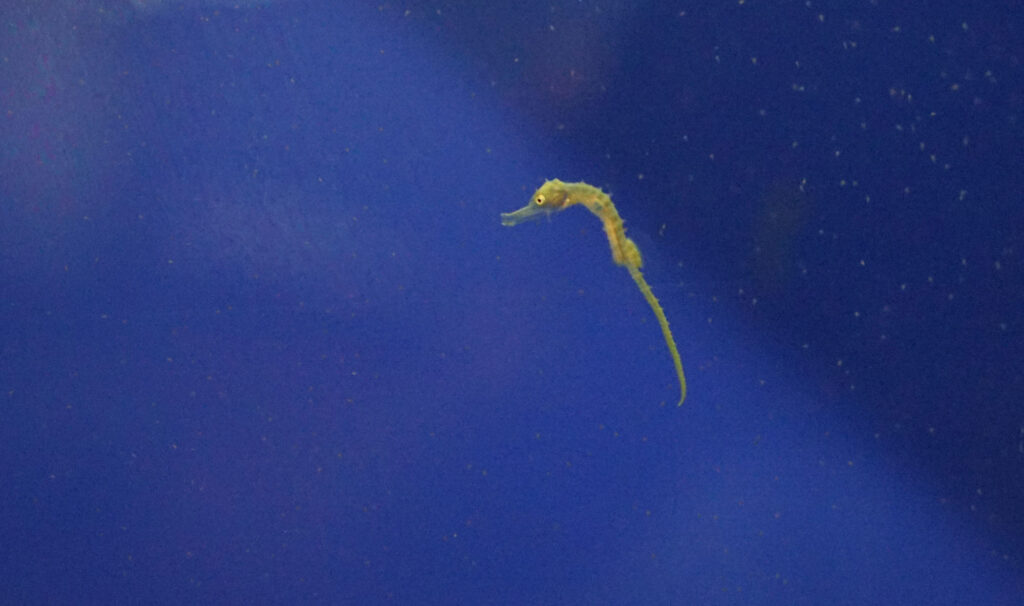These images show baby seahorses swimming in their tank after becoming the first to ever be bred in captivity at the Spanish aquarium.
Unlike most species on Earth, these seahorses are born to their fathers, as they are the ones who become pregnant.
In a statement sent to Newsflash, the experts at the Oceanografic Valencia, the self-proclaimed largest aquarium in Europe in the south-eastern Spanish Valencia region, said it was the first time they had managed to breed long-snouted seahorses, which are considered threatened in Spain, in captivity.
The aquarium said that it had “reached a new milestone” by succeeding in reproducing 30 long-snouted seahorses (Hippocampus guttulatus) for the first time at its facilities.
“It is a species present on European coasts and included in the Spanish Catalogue of Threatened Species, so breeding in a controlled environment is considered a success for conservation.”
They said that one of the major challenges to breathing this type of seahorse in an aquarium was to get them to mate.
They added that even after baby seahorses were born, it had been an impossible challenge until now to keep them alive for very long.
The aquarium said that they currently have 30 hatchlings in their quarantine area.

They are waiting for them to increase in size and weight before they move them to a public viewing area.
They said that all of the hatchlings were the offspring of two specimens provided to the aquarium by the Marine Research Institute in Vigo in north-western Spain.
They said that the goal is to increase the population of the species in Spanish waters.
They also said that they designed a tank to encourage males and females to mate, adding that it was vertical and facilitated “the courtship of the species, which is characterised by the dance in which the male and female intertwined their tails and swing upward in the water column”.
They added that it was especially important for the aquarium to have “adequate depth to facilitate the mating ritual”.
They also clarified that the male is the one who becomes pregnant, as is relatively common with seahorses, but they also said that the female “plays a significant role in the gestation process as they deposit the eggs in the male’s sac.”

To find out more about the author, editor or agency that supplied this story – please click below.
Story By: Joseph Golder, Sub-Editor: Lee Bullen, Agency: Newsflash
The Ananova page is created by and dedicated to professional, independent freelance journalists. It is a place for us to showcase our work. When our news is sold to our media partners, we will include the link here.




